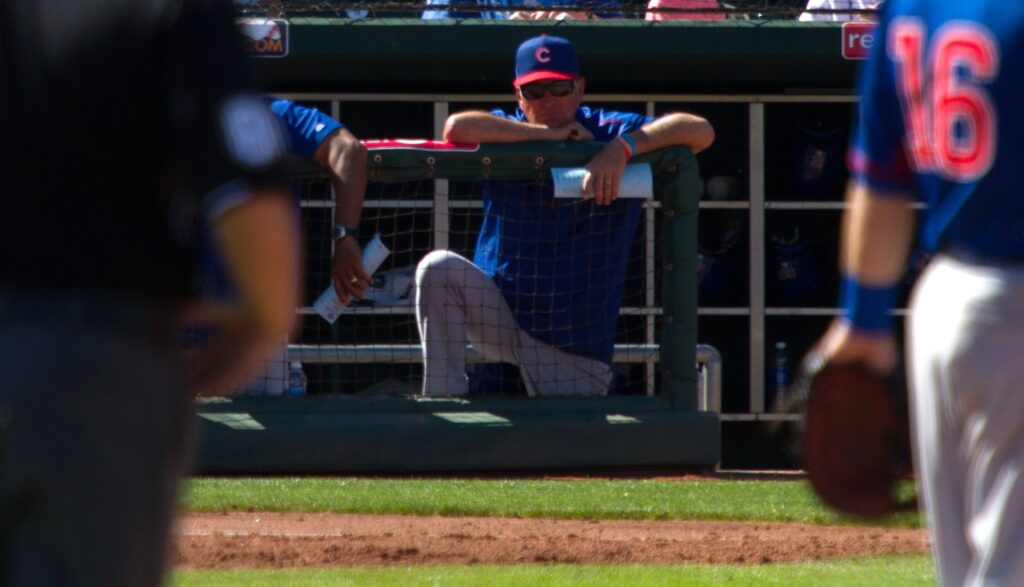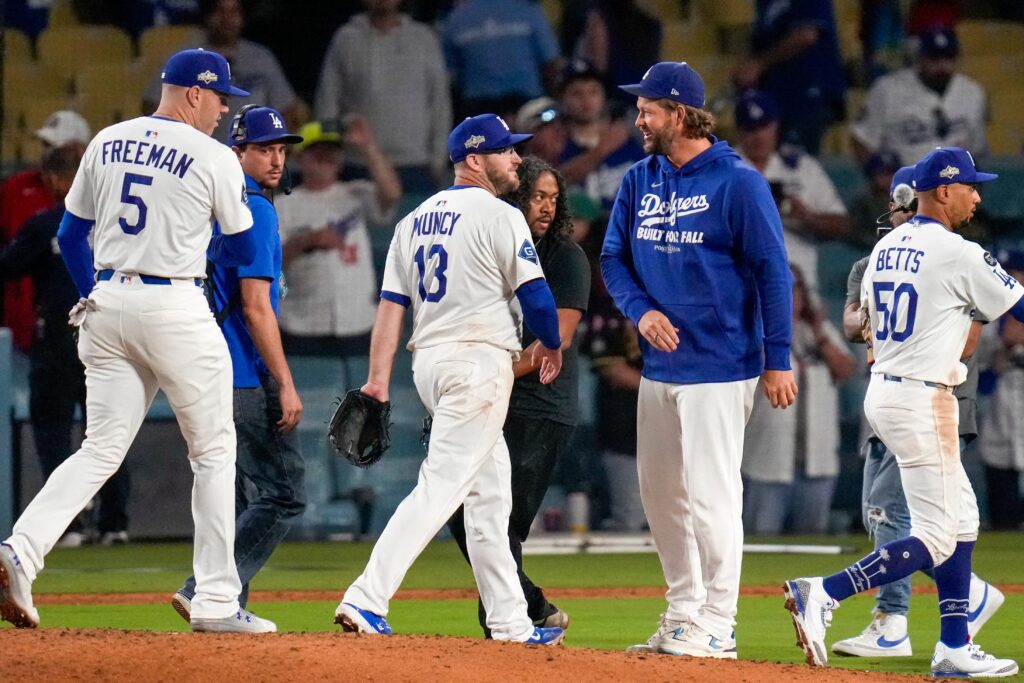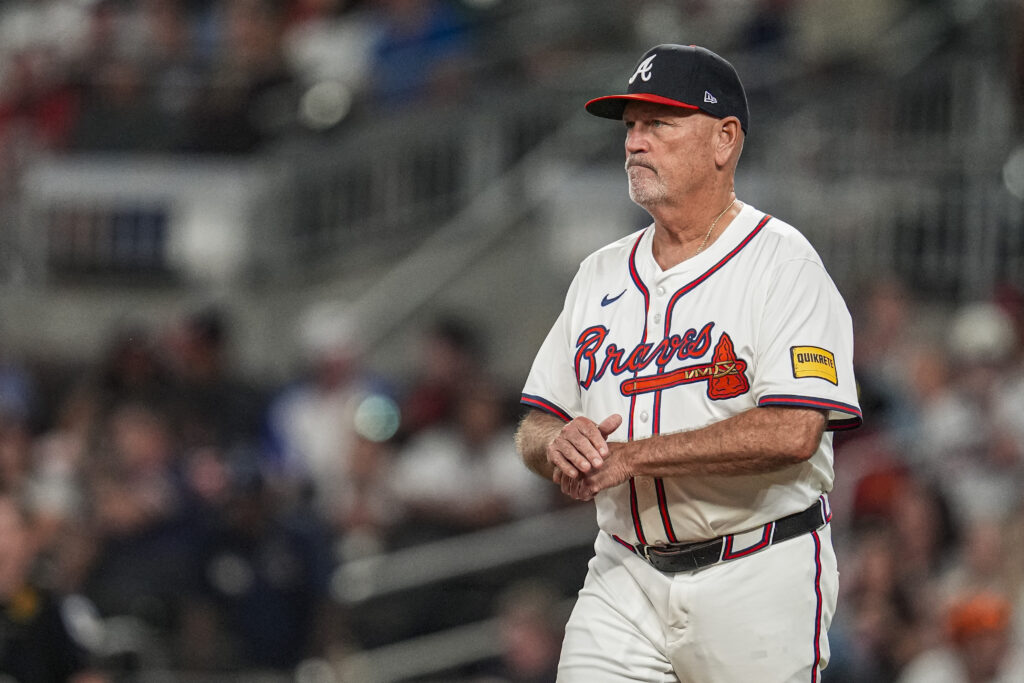This is the first article in a series that looks at the five best players at each position for the Chicago Cubs. In this installment, catchers and managers.
Much like the Red Sox, the Chicago Cubs saw quite a bit of prosperity in the early 1900s, then went on a long stretch without a championship that lasted into the 21st century. The team was a charter member when the National League began play in 1876, but there was a Chicago entry to the National Association five years earlier. The Cubs would have matched the Braves as the longest-running baseball franchise if not for the Great Chicago Fire of 1871 that destroyed 3.3 square miles of the city, including Lake Front Park, causing the team to cease operations for two years. The then-White Stockings were owned by future Hall of Fame executive William Hulbert, and featured star players Adrian “Cap” Anson and Albert Spalding, who would take over as owner after Hulbert died until he decided to devote his full attention to his sporting goods company.
The team enjoyed early success on the field, winning six pennants in 22 seasons under Anson, who was a player-coach. After Spalding and Anson left, there were several changes, both in ownership and in the team’s name. The White Stockings became the Colts in 1890 and then the Orphans in 1898, the year after Anson left, and finally became the Cubs in 1903. The team returned to respectability under former Boston Beaneaters manager Frank Selee in the early 1900s, and then won four pennants and two World Series championships in a five-year span under player-manager Frank Chance from 1906-10. More ownership struggles followed in the next decade until the Wrigley family took over and the Cubs once again reached the World Series in 1918.
Chicago won the National League pennant five times from 1929-45 but fell in the World Series each of those years. The Cubs went on a nearly 40-year playoff drought, finally making it back to the playoffs in 1984. The team’s biggest failures during this time included the 1945 World Series, when Billy Sianis, the owner of the Billy Goat Tavern, bought him and his goat, Murphy, to Game 4. Other spectators complained about the smell of the goat and ushers told Sianis to leave. He did so, but not before yelling that the Cubs would never win the World Series again, an incident that became known as the “Curse of the Billy Goat”. The other major Cubs failure came in 1969. Chicago was leading the new National League East by eight games on August 19, but the Cubs were falling apart, allowing the Mets to get back in the race. New York was only 1 1/2 games back on September 9, when a black cat ran in front of the Cubs’ dugout during the game. Chicago lost the game and continued their spiral, giving the “Miracle Mets” the division title, which they later turned into the championship.
In the 25 years from 1984 to 2008, the Cubs made the playoffs six times, but never were they closer to getting back to the World Series than in 2003. Chicago was leading the Florida Marlins 3 games to 2 in the NLCS and was up 3-0 with one out in the eighth inning when Luis Castillo hit a fly ball down the left-field line. The ball was close enough to the field for Moises Alou to try and catch it, but it was deflected by Cubs fan Steve Bartman, who was trying to snag himself a souvenir. The umpire ruled it wasn’t fan interference and Chicago gave up eight runs and then lost to Florida in Game 7.
Chicago finally broke through under manager Joe Madden, who led the team to four straight playoff appearances from 2015-18. In 2016, the Cubs ran way with the Central Division crown, then beat the Giants and Dodgers and outlasted both the Indians and the weather to win the World Series for their first title in 108 years!
The Best Catchers and Managers in Chicago Cubs History
Catchers
Honorable Mention – Frank “Silver” Flint was a member of five pennant-winning teams in 11 seasons with the White Stockings (1879-89). He amassed 625 hits and 276 RBIs in 680 games.
5. Randy Hundley – While he didn’t have the home run power of his son, Todd, Randy was a solid fielder and a steady presence behind the plate for the Cubs. Hundley won a gold glove in 1967 and earned his only All-Star selection two years later when he hit .255 with 18 home runs and 64 runs batted in. He played 10 seasons with Chicago (1966-73 and 76-77), totaling 758 hits, 80 homers, and 364 RBIs in 947 games.
4. Jody Davis – He was a two-time All-Star and a 1986 gold glove winner during his eight seasons in Chicago (1981-88). Davis’ best seasons were in 1983 when he hit .271 with 24 home runs and 84 runs batted in, and the following year, when he posted a .256-19-94 stat line. Davis had 834 hits, 122 homers, and 467 RBIs in 990 career games with the Cubs. He hit two home runs and drove in six runs in the five-game loss to the Padres in the 1984 National League Championship Series.
3. Willson Contreras – Solid both at the plate and behind it, Contreras earned three All-Star selections and hit at least 20 home runs four times in his seven years with the club. He totaled 636 hits, 117 homers, and 365 RBIs in 734 games with the Cubs. Contreras also hit three home runs and drove in seven runs in 30 career postseason games, and he was the starter when Chicago won the World Series in 2016. Contreras signed with the rival Cardinals before the 2023 season.
2. Johnny Kling – He was a solid hitter at the position (something that was not expected in the early 1900s) and he was arguably the best defensive catcher in the first decade of the 20th century. Kling hit .272 in his 11 seasons with Chicago (1900-08 and 10-11), and he drove in 50 or more runs four times. He had 963 hits, 438 RBIs, and 119 stolen bases in 1,025 games. Kling started for the Cubs when they played in four World Series in five years, collecting 12 hits in 21 games. He was a successful real estate businessman both during and after his career, and he missed the 1909 season to win the world pocket billiards championship and start his own pool emporium.
1. Gabby Hartnett – Charles Hartnett got his nickname from newspaper reporters for his shyness and reluctance to talk to them. He was the best player at his position for nearly two decades and spent 19 of his 20 seasons with the Cubs (1922-40). In an era when catchers were not expected to be good hitters, Hartnett was a revolutionary. He topped .300 six times, drove in 80 or more runs six times, and hit 20 home runs three times. Hartnett put up a strong case for best player in the league in 1930, hitting .339 and posting career highs with 84 runs, 172 hits, 37 homers, and 122 RBIs. However, teammate Hack Wilson hit .356 with 56 home runs and a league-record 191 RBIs that same season. Hartnett succeeded in becoming the first catcher to win the MVP award in 1935 when he hit .344 with 13 home runs and 91 RBIs to edge out Dizzy Dean.
Although the All-Star Game was not contested until 1933, Harnett appeared in the first six. In an era before gold gloves, he led the league in fielding percentage six times. After three years as Chicago’s player-manager, Hartnett was fired and signed with the Giants, where he spent his final season in 1941. In Cubs history, he ranks sixth in doubles (391) and RBIs (1,153) and eighth in games (1,926), total bases (3,079), and home runs (231). Hartnett also scored 847 runs and hit .297. Hartnett also had 13 hits, two home runs, and three RBIs in 16 World Series games (Cubs losses in 1929, 32, 35, and 38). He was inducted into the Baseball Hall of Fame in 1955.
Managers
Honorable Mentions – Jim Frey went 196-182 in parts of three seasons (1984-86). The Cubs lost a heartbreaking NLCS to the Padres under his watch in 1984. Speaking of heartbreaking losses, Dusty Baker went 322-326 in four seasons in Chicago (2003-06), which was highlighted by the collapse against the Marlins in the 2003 NLCS. Although he is best known for his memorable scuffle with Pedro Martinez as a Yankees coach in the 2003 ALCS, Don Zimmer spent two decades (1972-91) as a manager with four teams. Zimmer went 265-258 in four seasons in Chicago (1988-91). He earned the Manager of the Year award after leading the Cubs to the NLCS (a loss to the Giants) in 1989. Fred Mitchell went 308-269 in four seasons (1917-20). In 1918, he led the Cubs to an 84-45 record and an NL pennant, but they lost to the Red Sox in the World Series.
Jim Riggleman led Chicago to a 374-419 record in five years (1995-99). Under his watch, the Cubs won 90 games but lost in the National League Division Series in 1998. Lou Piniella had a 316-293 record in parts of four seasons (2007-10). He led the Cubs to the division titles in back-to-back years, but they got swept in the NLDS both times (including 2008, when they won 97 games in the regular season, and he was named Coach of the Year). Although Hall of Famer Leo Durocher could not replicate his earlier success with the Dodgers and Giants, he did lead the Cubs to a 535-526 mark in six-plus seasons (1966-72). Chicago had at least 80 wins five times with “The Lip” at the helm, but they never made the postseason, finishing second twice, third twice, and fourth in those seasons.
5. Joe McCarthy – The Hall of Famer went 442-321 in five seasons (1926-30), and the Cubs won at least 82 games each year. However, they only took home one pennant in 1929, when they won 98 games but lost to the Philadelphia Athletics in the World Series.
4. Charlie Grimm – He has the second-most wins in franchise history, posting a 946-782 mark in 14 seasons over three stints in Chicago (1932-38, 44-49, and 1960). Grimm led the Cubs to three pennants, but they lost all three World Series (a sweep by the Yankees in 1932, a 4-2 loss to the Tigers in ’35, and a 4-3 loss to Detroit in ’45). Chicago won 80 or more games nine times under Grimm, with a high mark of 100-54 in 1935.
3. Adrian “Cap” Anson holds the all-time franchise record for managerial victories, going 1,282-932-44 in 19 seasons as a player-manager (1879-97). Under his leadership, the White Stockings won six pennants and played in two worlds championship series against the American Association (a 3-3-1 tie with the St. Louis Browns in 1885 and a 4-2 loss to the Browns the following year). Anson’s teams won 80 or more games four times, with a 90-34-2 mark in 1886 being the best. Although he was a Hall of Fame player, his morals leave a lot to be desired, and that is why he is at this spot. Anson was arguably the best player of the 19th century and a manager, so his voice carried extra weight. So, when Anson said his White Stockings would not play against black players (such as Moses Fleetwood Walker and George Stovey), umpires and league officials removed and later banned them. By 1890, there were no black players left in the Major Leagues, and there wouldn’t be for more than 50 years.
2. Joe Maddon was a tactical and analytical mind who was the leader of the team that broke a 108-year championship drought. He went 471-339 in five seasons (2015-19) and the Cubs went to the playoffs four times under his watch. Chicago went 103-58 and won the World Series in 2016, with Maddon winning the Manager of the Year award. The Cubs went to the NLCS in 2015 and ’17 as well during his tenure.
1. Frank Chance – The Hall of Fame first basemen led Chicago to a 768-389-19 in parts of eight seasons (1905-12) as a player-manager. Chance and the Cubs won four pennants and two World Series in a five-year stretch (1906-10) that included the top four single-season victory totals in franchise history. The club set a Major League record with 116 wins (since tied by the 2001 Mariners) and a .763 winning percentage but lost 4-2 to the crosstown White Sox in 1906. The Cubs went 107-45 and beat the Tigers 4-0-1 for their first World Series championship in 1907, then posted a 99-55 record the next year and topped Detroit for the title again, this time 4-1. Chicago won 104 games in each of the next two years, finishing second in the National League to the 110-win Pirates in 1909 and losing 4-1 to the Philadelphia Athletics in the World Series the following year.
Upcoming Stories
Chicago Cubs First and Third Basemen – coming soon
Chicago Cubs Second Basemen and Shortstops – coming soon
Chicago Cubs Outfielders – coming soon
Chicago Cubs Pitchers – coming soon
Previous Series
A look back at the Boston Red Sox
Boston Red Sox Catchers and Managers
Boston Red Sox First and Third Basemen
Boston Red Sox Second Basemen and Shortstops
Boston Red Sox Outfielders and Designated Hitters
Boston Red Sox Pitchers
A look back at the Baltimore Orioles
Baltimore Orioles Catchers and Managers
Baltimore Orioles First and Third Basemen
Baltimore Orioles Second Basemen and Shortstops
Baltimore Orioles Outfielders and Designated Hitters
Baltimore Orioles Pitchers
A look back at the Atlanta Braves
Catchers and Managers
First and Third Basemen
Second Basemen and Shortstops
Outfielders
Pitchers
A look back at the Arizona Diamondbacks
Catchers and Managers
First and Third Basemen
Second Basemen and Shortstops
Outfielders
Pitchers



